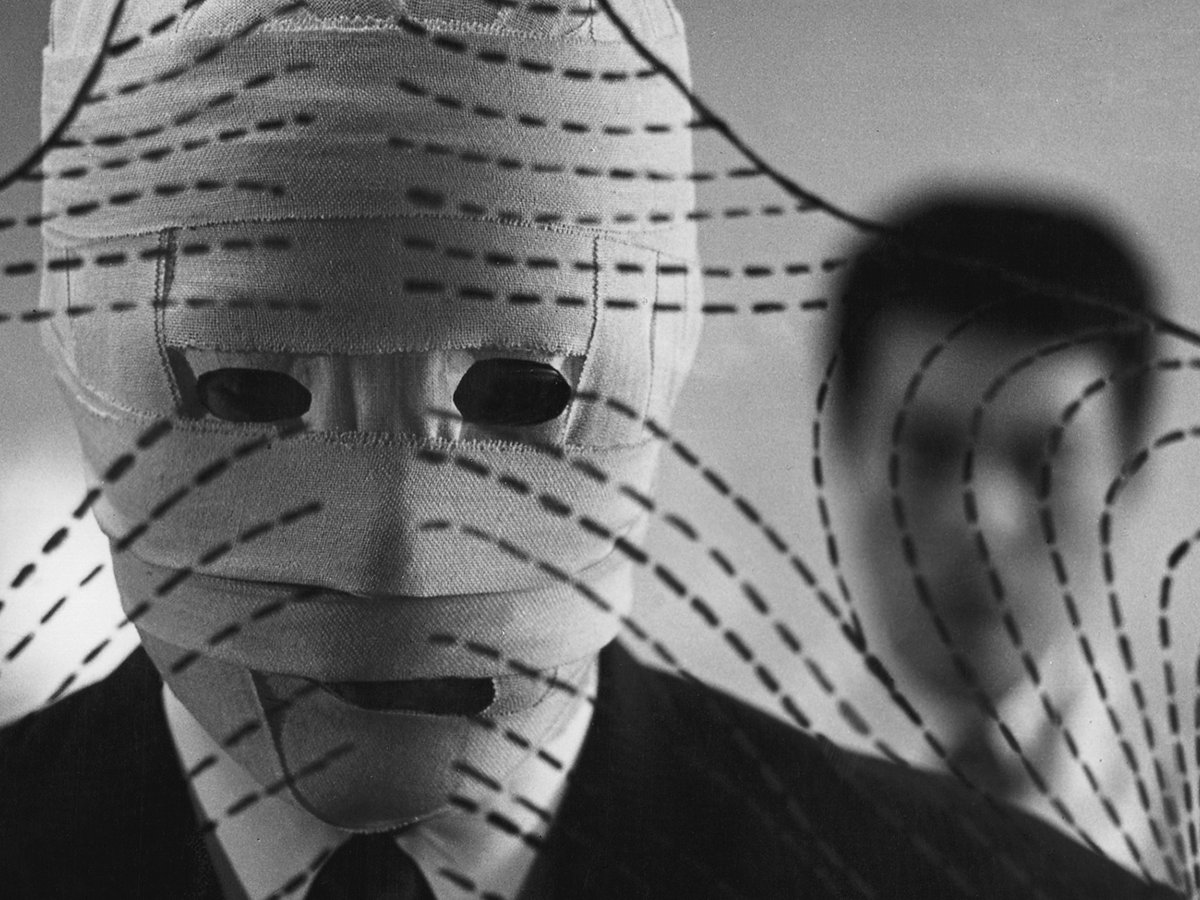
When Okuyama, a chemical factory employee, is left with disfiguring burns after an industrial accident, he estranges from his family and friends. His psychiatrist suggests a radical experiment: a face transplant. Discovering the possibilities his newfound anonymity offers, Okuyama find the mask altering his personality.
“The theme of unmoored identity and fragmented consciousness finds its equivalent in the opening images of isolated limbs and in the truncated, neocubist shots of lips, fingers, back of the head that introduce Machiko Kyo as the wife. The mirror imagery so prevalent in Abe’s work, derived in part from an ancient Japanese origin myth, gets refracted in the film’s insistent images of glass. The doctor’s baroque office, a theater of cruelty shot with a roving camera through glass partitions, shelves, instruments, beakers, and bric-a-brac to achieve an abstract, graphic quality, anticipates the extreme mise-en-scène of Fassbinder’s extravagant “glass period” and its emphasis on interior space as a kind of vitrine in which every frozen emotion finds its icy image reflected, fragmented, distorted, multiplied in a mirrored surface of glass, Lucite, or metal. [...]
Like the paintings of James Ensor, which it seems to invoke, The Face of Another too clearly sees the skull beneath the skin, the dissembling of flesh, life as a vast masquerade.”
James Quandt1
- 1James Quandt, “The Face of Another: Double Vision”, Criterion, 2007.

